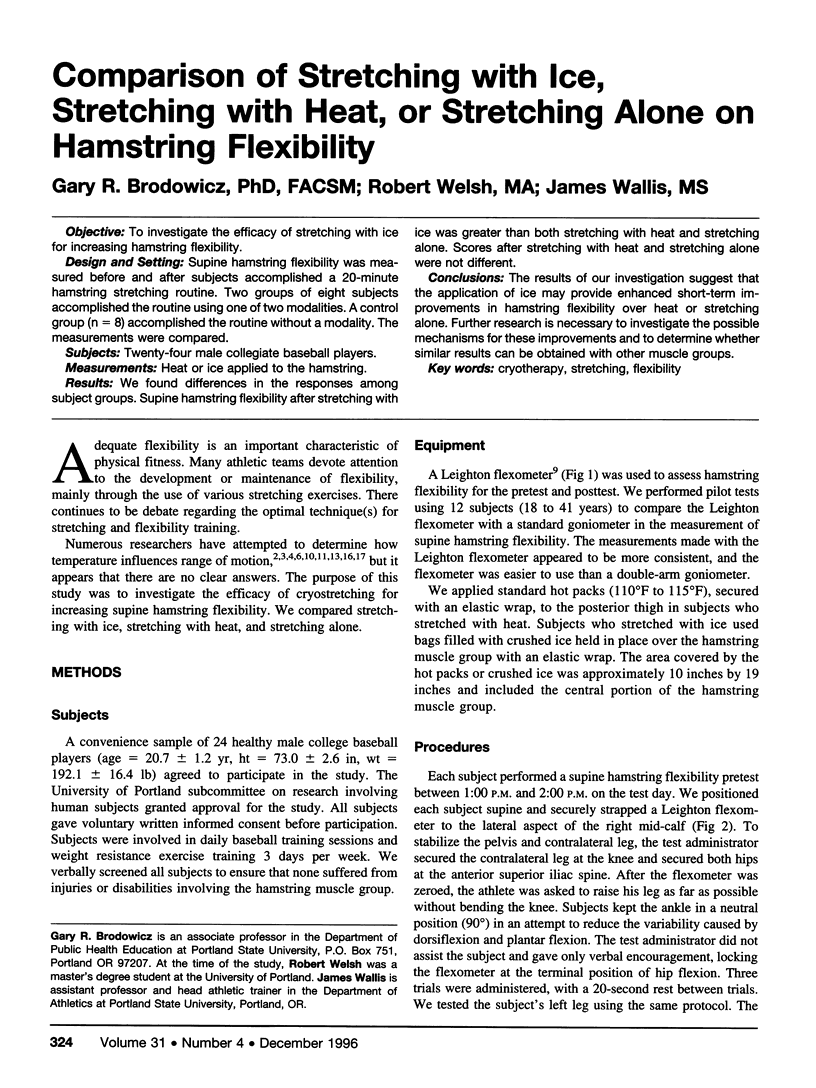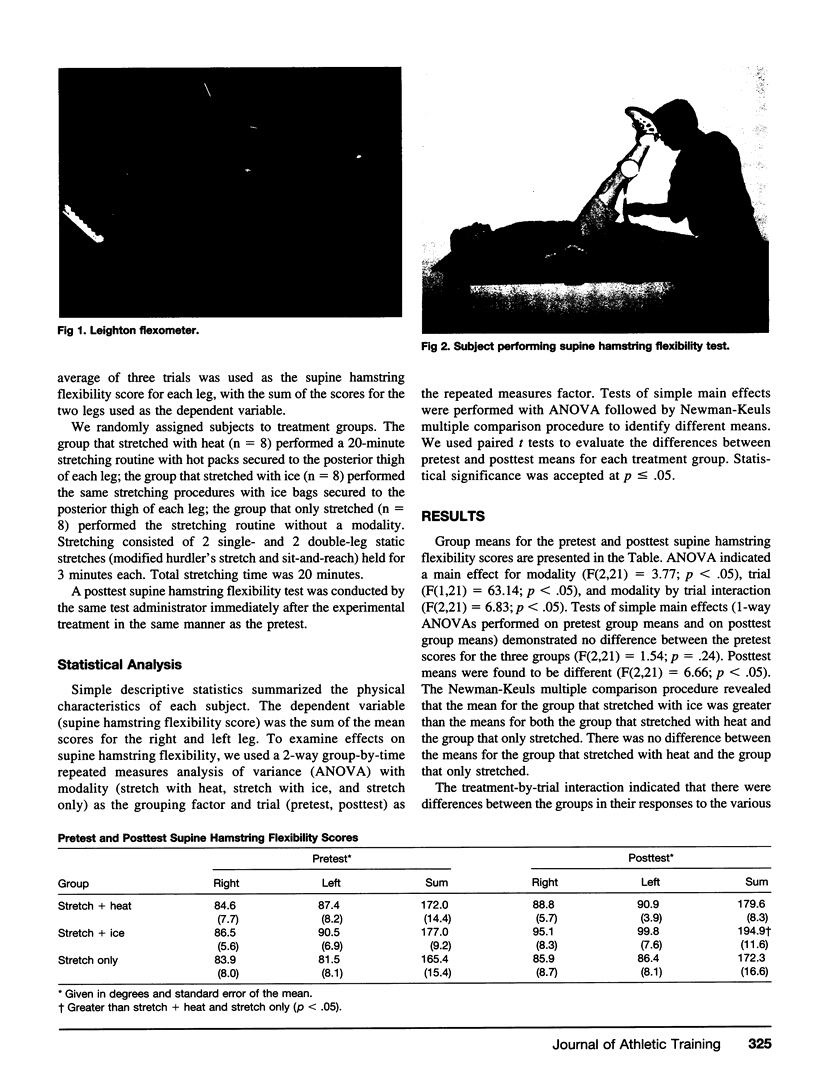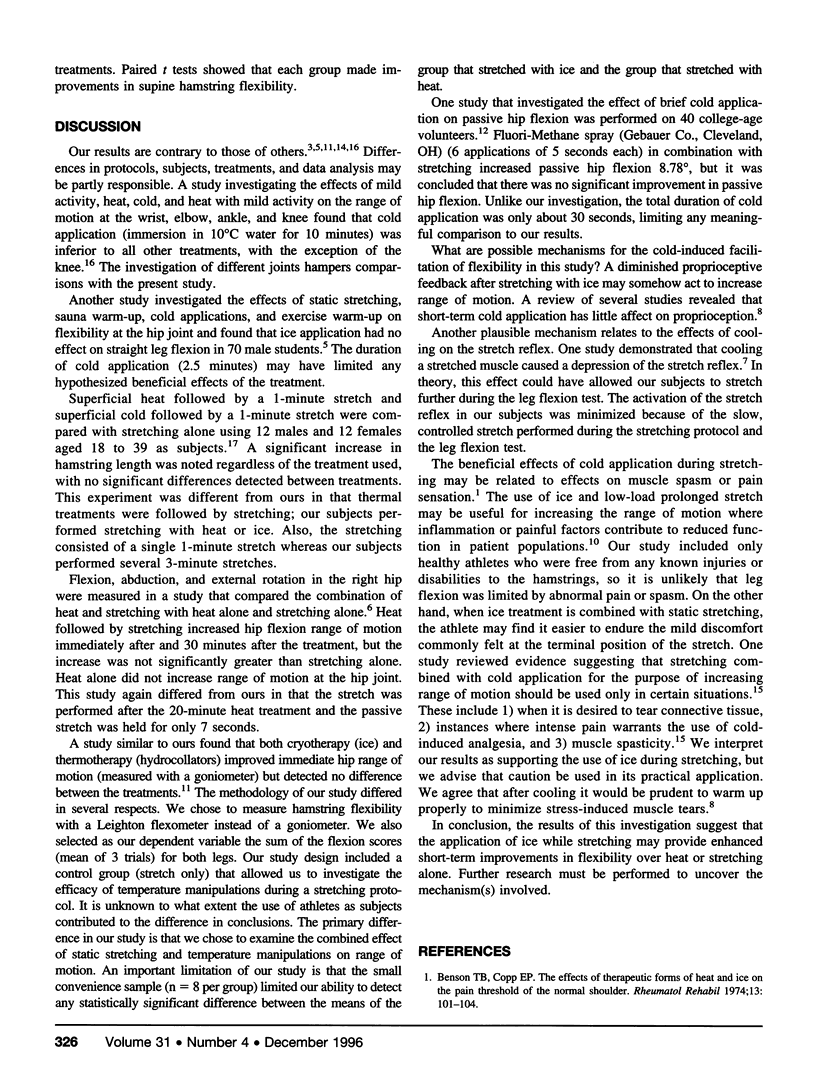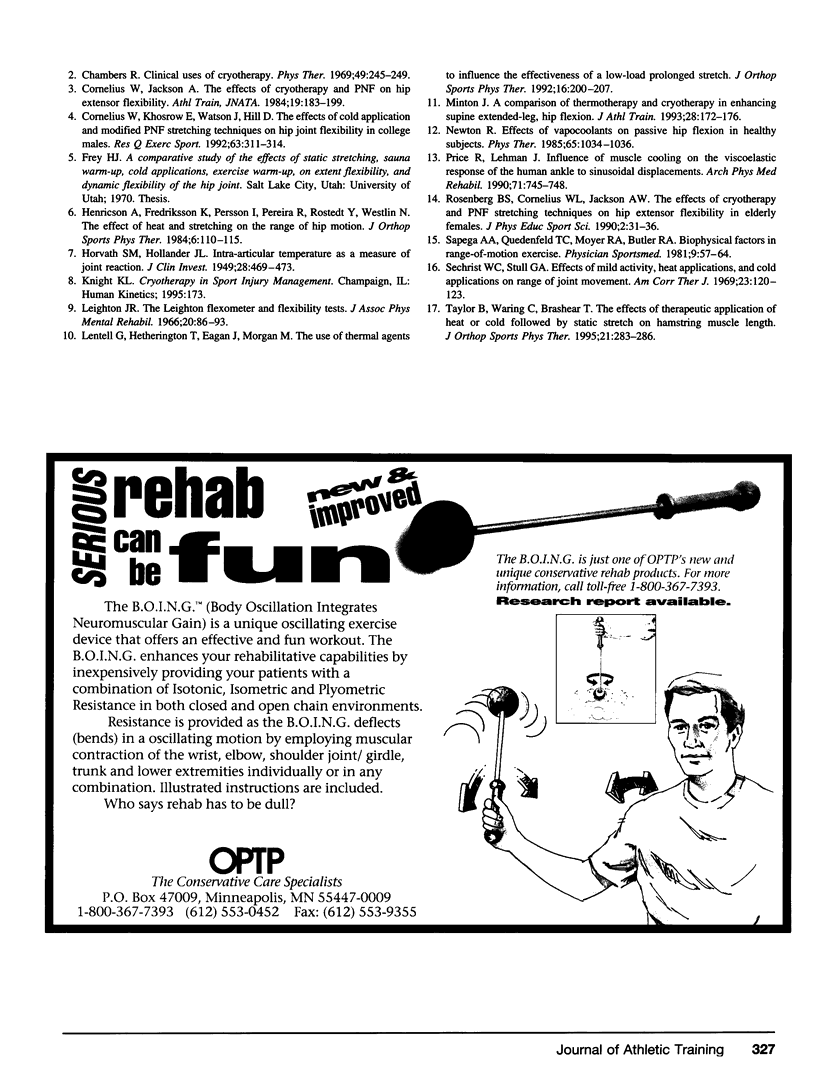Abstract
Objective:
To investigate the efficacy of stretching with ice for increasing hamstring flexibility.
Design and Setting:
Supine hamstring flexibility was measured before and after subjects accomplished a 20-minute hamstring stretching routine. Two groups of eight subjects accomplished the routine using one of two modalities. A control group (n = 8) accomplished the routine without a modality. The measurements were compared.
Subjects:
Twenty-four male collegiate baseball players.
Measurements:
Heat or ice applied to the hamstring.
Results:
We found differences in the responses among subject groups. Supine hamstring flexibility after stretching with ice was greater than both stretching with heat and stretching alone. Scores after stretching with heat and stretching alone were not different.
Conclusions:
The results of our investigation suggest that the application of ice may provide enhanced short-term improvements in hamstring flexibility over heat or stretching alone. Further research is necessary to investigate the possible mechanisms for these improvements and to determine whether similar results can be obtained with other muscle groups.
Keywords: cryotherapy, stretching, flexibility
Full text
PDF



Images in this article
Selected References
These references are in PubMed. This may not be the complete list of references from this article.
- Benson T. B., Copp E. P. The effects of therapeutic forms of heat and ice on the pain threshold of the normal shoulder. Rheumatol Rehabil. 1974 May;13(2):101–104. doi: 10.1093/rheumatology/13.2.101. [DOI] [PubMed] [Google Scholar]
- Chambers R. Clinical uses of cryotherapy. Phys Ther. 1969 Mar;49(3):245–249. doi: 10.1093/ptj/49.3.245. [DOI] [PubMed] [Google Scholar]
- Cornelius W. L., Ebrahim K., Watson J., Hill D. W. The effects of cold application and modified PNF stretching techniques on hip joint flexibility in college males. Res Q Exerc Sport. 1992 Sep;63(3):311–314. doi: 10.1080/02701367.1992.10608747. [DOI] [PubMed] [Google Scholar]
- Horvath S. M., Hollander J. L. INTRA-ARTICULAR TEMPERATURE AS A MEASURE OF JOINT REACTION. J Clin Invest. 1949 May;28(3):469–473. doi: 10.1172/JCI102092. [DOI] [PMC free article] [PubMed] [Google Scholar]
- Leighton J. R. The Leighton flexometer and flexibility test. J Assoc Phys Ment Rehabil. 1966 May-Jun;20(3):86–93. [PubMed] [Google Scholar]
- Minton J. 1992 Student Writing Contest-1st Runner-up: A Comparison of Thermotherapy and Cryotherapy in Enhancing Supine, Extended-leg, Hip Flexion. J Athl Train. 1993 Summer;28(2):172–176. [PMC free article] [PubMed] [Google Scholar]
- Newton R. A. Effects of vapocoolants on passive hip flexion in healthy subjects. Phys Ther. 1985 Jul;65(7):1034–1036. doi: 10.1093/ptj/65.7.1034. [DOI] [PubMed] [Google Scholar]
- Price R., Lehmann J. F. Influence of muscle cooling on the viscoelastic response of the human ankle to sinusoidal displacements. Arch Phys Med Rehabil. 1990 Sep;71(10):745–748. [PubMed] [Google Scholar]
- Sechrist W. C., Stull G. A. Effect of mild activity, heat applications, and cold applications on range of joint movement. Am Correct Ther J. 1969 Jul-Aug;23(4):120–123. [PubMed] [Google Scholar]
- Taylor B. F., Waring C. A., Brashear T. A. The effects of therapeutic application of heat or cold followed by static stretch on hamstring muscle length. J Orthop Sports Phys Ther. 1995 May;21(5):283–286. doi: 10.2519/jospt.1995.21.5.283. [DOI] [PubMed] [Google Scholar]




